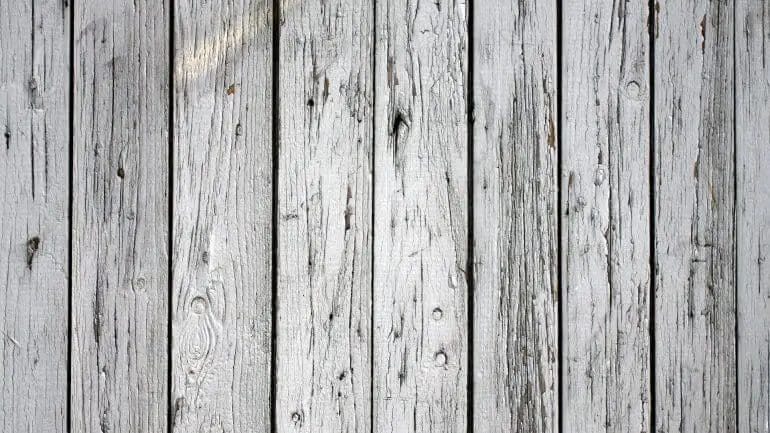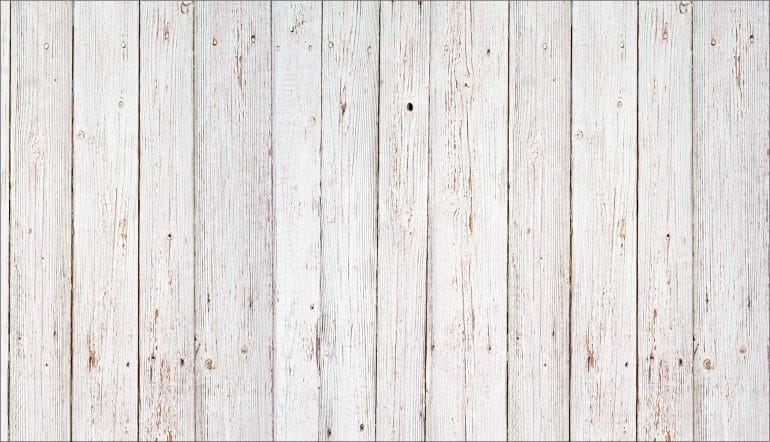White wood at Lowe’s refers to a type of lumber that is commonly used for various woodworking projects and home improvements. It typically has a light color and a smooth surface, making it suitable for painting or staining. White wood is known for its versatility, durability, and affordability, making it a popular choice among DIY enthusiasts and professionals alike. Whether you’re building furniture, paneling walls, or creating decorative accents, white wood at Lowe’s can provide you with the quality materials you need.

How to Identify and Select High-Quality White Wood at Lowes
When it comes to woodworking projects, choosing the right type of wood is essential. White wood, also known as construction lumber, is a popular choice due to its affordability and versatility. However, not all white wood is created equal. To ensure the success of your project, it is important to identify and select high-quality white wood. In this section, we will provide you with some tips and guidelines on how to do just that at Lowes, a well-known home improvement store.

1. Examine the Appearance
Start by closely examining the appearance of the white wood. Look for boards that have a smooth and straight surface. Avoid any boards that are warped, twisted, or have visible knots. These imperfections can affect the structural integrity and overall look of your finished project.
2. Check for Moisture Content
Moisture content is an important factor to consider when selecting white wood. The ideal moisture content for construction lumber is around 15%. To check the moisture content, use a moisture meter. Lowes usually has these meters available for customer use. Avoid selecting wood that is too wet or too dry, as it can lead to issues such as warping or shrinking once installed.
3. Assess the Grade
White wood is graded based on its appearance and structural properties. The most common grades for construction lumber are Select, #1, #2, and #3. Select grade is the highest quality, with very few knots and defects, while #3 grade is the lowest quality, with more knots and defects. Consider the requirements of your project and choose an appropriate grade accordingly.
4. Check for Straightness
Straightness is another important aspect to consider when selecting white wood. Look down the length of each board to ensure that it is straight and not twisted. Twisted boards can be difficult to work with and may result in uneven joints or gaps.
5. Consider the Size
Finally, consider the size of the white wood boards. Lowes offers a variety of sizes to choose from. Determine the dimensions that are suitable for your project and select boards accordingly. It is advisable to purchase boards that are slightly longer than needed, as you can always cut them down to size.
By following these tips and guidelines, you can identify and select high-quality white wood at Lowes for your woodworking projects. Remember to take your time and carefully inspect each board before making a purchase. Investing in high-quality white wood will ensure the success and durability of your finished project.

3. Different Uses of White Wood in Home Improvement Projects
White wood, also known as whitewood or softwood, refers to the timber obtained from coniferous trees such as pine, spruce, and fir. It is widely used in various home improvement projects due to its affordability, versatility, and aesthetic appeal. In this section, we will explore some of the different uses of white wood in home improvement.
1. Interior Wall Paneling
White wood paneling is a popular choice for enhancing the visual appeal of interior walls. Its light color and natural grain patterns add warmth and texture to any room. Whether you prefer a rustic, farmhouse look or a modern, Scandinavian style, white wood paneling can create a charming and timeless atmosphere.
2. Trim and Molding
White wood is commonly used for trim and molding in homes. It can be shaped and cut into various profiles to create baseboards, crown moldings, window casings, and door frames. White wood trim adds a finishing touch to any room, providing a seamless transition between walls and other architectural elements.
3. Furniture and Cabinetry
White wood is an excellent choice for constructing furniture and cabinetry due to its durability and versatility. It can be easily stained or painted to match any interior design style. Whether you’re building a bookshelf, a dining table, or kitchen cabinets, white wood can provide a classic and timeless look.
4. Decking and Outdoor Structures
White wood is also widely used for outdoor projects such as decking, fences, pergolas, and gazebos. Its natural resistance to decay and insects makes it ideal for withstanding outdoor elements. With regular maintenance and treatment, white wood can maintain its beauty and functionality for years.
5. DIY Projects
White wood is a popular choice for DIY enthusiasts due to its affordability and ease of use. It can be easily cut, shaped, and assembled for various projects such as shelves, picture frames, and decorative accents. Whether you’re a seasoned woodworker or a beginner, white wood allows you to bring your creative ideas to life.
6. Flooring
While white wood is not as commonly used for flooring as hardwood, it can still be a cost-effective and attractive option. White wood flooring provides a light and airy feel to any space and can easily complement a wide range of interior styles. It is important to note that white wood flooring may require regular maintenance and refinishing to keep it looking its best.
7. Outdoor Furniture
White wood is often used for outdoor furniture due to its ability to blend well with natural surroundings. It can be treated with protective coatings to enhance its durability and resistance to weather conditions. From benches and picnic tables to Adirondack chairs, white wood furniture can create a cozy and inviting outdoor living space.
In summary, white wood offers a multitude of uses in various home improvement projects. Whether you’re looking to enhance your interior walls, add trim and molding, build furniture or outdoor structures, or embark on DIY projects, white wood provides affordability, versatility, and visual appeal. Its natural beauty and timeless charm make it a popular choice among homeowners and DIY enthusiasts alike.

Tips for Staining and Finishing White Wood from Lowes
Staining and finishing white wood can be a challenging task, but with the right tips and techniques, you can achieve beautiful results. Whether you are working on a DIY project or refinishing furniture, follow these tips from Lowes to ensure a successful and professional-looking finish.
1. Prepare the wood
Before applying any stain or finish, it is crucial to properly prepare the wood surface. Start by sanding the wood with medium-grit sandpaper to remove any imperfections and create a smooth surface. Be sure to sand in the direction of the wood grain to avoid scratches. After sanding, wipe the surface clean with a tack cloth to remove any dust or debris.
2. Choose the right stain color
Choosing the right stain color is essential to achieve the desired look for your project. Lowes offers a wide range of stain colors, from light to dark shades. Consider the existing decor and the desired aesthetic when selecting a stain color. It’s always a good idea to test the stain on a small, inconspicuous area of the wood to ensure it matches your expectations.
3. Apply the stain evenly
When applying the stain, it is important to work in a well-ventilated area and wear protective gloves and clothing. Stir the stain thoroughly before applying it to ensure an even color distribution. Use a brush or a clean cloth to apply the stain in long, even strokes, following the direction of the wood grain. Start by applying a thin coat and let it penetrate the wood for a few minutes before wiping off the excess stain with a clean cloth.
4. Allow sufficient drying time
After applying the stain, allow sufficient drying time before applying the finish. The drying time can vary depending on the type of stain and environmental conditions. Follow the manufacturer’s instructions for the recommended drying time. It’s important not to rush this step to avoid smudges or uneven finishes.
5. Choose the right finish
Choosing the right finish is crucial to protect the stained wood and enhance its appearance. Lowes offers a variety of finishes, including polyurethane, varnish, and lacquer. Consider the level of durability and sheen you desire when selecting a finish. Apply the finish using a brush or a clean cloth, following the manufacturer’s instructions.
6. Sand between coats
If you decide to apply multiple coats of finish, it’s important to sand between each coat for a smooth and even finish. Use fine-grit sandpaper to lightly sand the surface, then wipe it clean with a tack cloth before applying the next coat. This step helps to remove any imperfections and ensures proper adhesion between the coats.
7. Protect your finished wood
Once the final coat of finish has dried, it’s important to protect the finished wood surface. Avoid placing hot objects directly on the surface to prevent heat damage. Use coasters or placemats under glasses and plates to prevent water rings or scratches. Regularly clean the surface with a mild, non-abrasive cleaner to maintain its beauty.
In summary, staining and finishing white wood requires proper preparation, selection of the right stain color and finish, and careful application techniques. By following these tips from Lowes, you can achieve professional-looking results and enhance the beauty of your wood projects.
Maintenance and Care Tips for White Wood Furniture from Lowes
White wood furniture adds a touch of elegance and sophistication to any room. Whether you have a white wood dining table, chairs, or a beautiful white wood dresser, it is important to take proper care of your furniture to ensure its longevity and keep it looking its best. In this section, we will provide you with some maintenance and care tips specifically tailored for white wood furniture from Lowes.
1. Regular Cleaning
Regular cleaning is essential to keep your white wood furniture looking pristine. Dust and dirt can accumulate over time, making the furniture lose its shine. To clean your furniture, start by removing any loose dust or debris with a soft cloth or a feather duster. Then, mix a gentle cleaner, such as mild dish soap or white vinegar, with warm water. Dampen a clean cloth with the solution and gently wipe down the surfaces of your furniture. Remember to dry the furniture thoroughly with a separate cloth to prevent moisture damage.
2. Avoid Harsh Chemicals
When cleaning your white wood furniture, it is important to avoid using harsh chemicals or abrasive cleaners. These can cause damage to the finish and leave stains or discoloration. Instead, opt for mild and non-abrasive cleaning solutions that are safe for use on wood surfaces.
3. Prevent Direct Sunlight Exposure
Direct sunlight can cause your white wood furniture to fade and lose its vibrant color over time. To prevent this, position your furniture away from windows or use curtains or blinds to block out the sunlight. You can also consider applying UV protective film to your windows to reduce the effects of sunlight exposure.
4. Use Coasters and Mats
To protect the surface of your white wood furniture from heat, moisture, and scratches, it is advisable to use coasters, placemats, or tablecloths. This will prevent damage caused by hot dishes, spillage, or sharp objects. Additionally, using felt pads under furniture legs can help prevent scratches on the floor and minimize the risk of damage during movement.
5. Avoid Excessive Moisture
Excessive moisture can cause warping or swelling of the wood, leading to permanent damage. Take care to avoid placing your white wood furniture in areas prone to high humidity, such as bathrooms or near humidifiers. If there is a spill, wipe it up immediately to prevent the moisture from seeping into the wood.
6. Touch Up and Refinish
If you notice any scratches or minor damage on your white wood furniture, it is important to address them promptly. You can touch up scratches by using a matching wood stain or a touch-up pen specifically designed for furniture. For more significant damage, you may need to consider refinishing the furniture. Lowes offers a variety of wood refinishing products and resources to help you restore your white wood furniture to its original beauty.
7. Regular Inspection
Make it a habit to regularly inspect your white wood furniture for any signs of wear or damage. This includes checking for loose screws or joints, cracks, or any other issues that may need attention. By addressing these problems early on, you can prevent further damage and prolong the lifespan of your furniture.
In summary, maintaining and caring for your white wood furniture from Lowes requires regular cleaning, avoiding harsh chemicals, protecting it from direct sunlight, using coasters and mats, avoiding excessive moisture, addressing minor damage promptly, and conducting regular inspections. By following these tips, you can ensure that your white wood furniture remains beautiful and pristine for years to come.
FAQs
What is white wood at Lowe’s?
White wood is a term used to refer to a type of lumber that is commonly used for general construction purposes. It is usually made from softwood, such as pine, and is available in various dimensions. White wood can be used in a variety of projects, including framing, cabinetry, and furniture making.
Conclusion
In conclusion, White Wood at Lowe’s is a versatile and popular choice for various home improvement projects. Whether you are looking to build furniture, create decorative accents or undertake a DIY project, White Wood offers durability and a clean, classic look that complements any decor style. With Lowe’s wide selection of White Wood products, ranging from boards, panels, and plywood, you can easily find the right material for your needs. Additionally, Lowe’s commitment to quality ensures that you can trust the White Wood products available, giving you peace of mind as you embark on your next project. So visit Lowe’s today and unlock endless possibilities with White Wood!